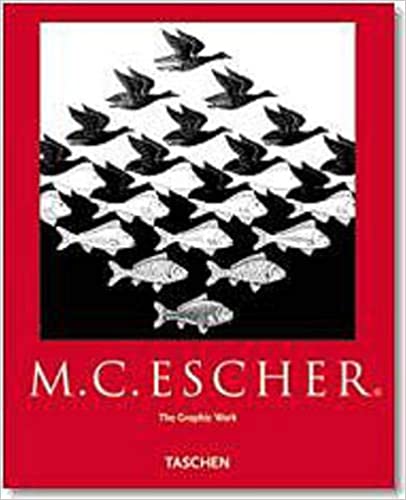Books |
M.C. Escher
By
Published: Feb 11, 2019
Category:
Art and Photography
SUPPORTING BUTLER: You can become a patron of this site, and automatically donate any amount you please — starting with $1 — each month. The service that enables this is Patreon, and to go there, just click here. Again, thank you.
Optical illusions. Mathematical magic. Disorienting and fascinating — a good description of what we’re living through. The one artist who combines both? Maurits Cornelis Escher (1898-1972).
Escher, born in the Netherlands, was an indifferent student but a dedicated draftsman whose exacting vision and precise technique led him to explore the relationship between art and mathematics. In 1922, he visited the Alhambra, a 14th Century castle in Granada, Spain; its intricate carvings and optical tricks inspired him to go deeper into mathematical creation. He’d go on to create 448 lithographs, woodcuts and wood engravings and more than 2,000 drawings and sketches, many of them mathematically-inspired — and to write so well on the subject that some academics considered him a research mathematician.
With Escher, every image you see is an instant favorite. And a brain-buster. But it’s fun, not homework, to trace his method. And it’s thrilling to see exactly how fish become birds, how stairways never end, how water flows uphill. By skewing perspective, Escher tricks the eye. [To buy the paperback of Escher’s greatest graphic work, click here.]
Fish into birds: Is he “saying” something here? Escher never broadcast his social and political views. His irritation was largely with flat shapes — "I make them come out of the plane," he said. In the 1930s and 1940s, however, he did put distance between the Nazis and himself. And, for decades after the war, he kept a sketch with the imprint of a German Army boot with his drawing supplies.
It’s always useful to carve out space for beauty and whimsy, the irrational and the downright silly. It’s also good to take a look at the artistry of Escher, who reminds us, with both bluntness and delicacy, how surface reality can trick us.
BONUS
There’s a book of Escher pop-ups. A special (that is, not cheap) gift. Click here.


